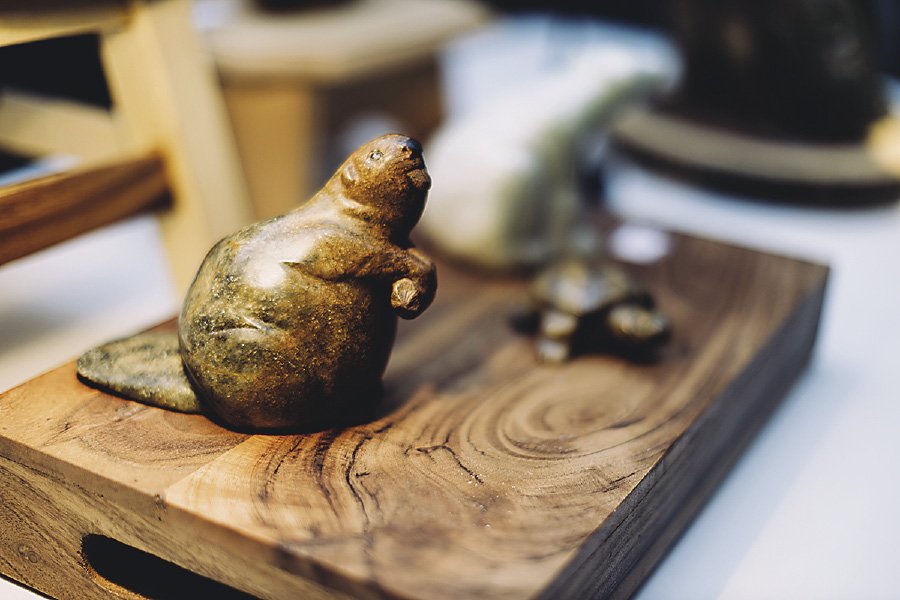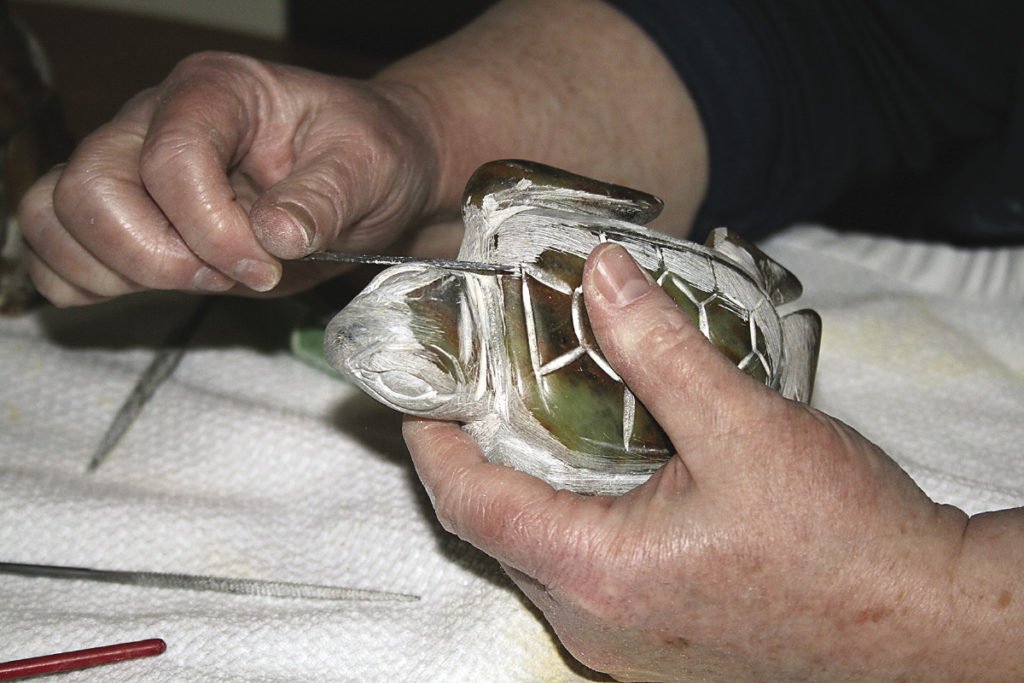Anywhere she moves, Deborah Spear carries rocks with her.
Inspired by the geology and wildlife along Lake Superior’s North Shore, the Manitoba native began working with soapstone, also known as steatite, about 12 years ago after taking a carving class in Thunder Bay.
I watched her from across a table as she grasped the handle of a 12-inch bow saw and ran it across a piece of the soft, metamorphic rock. The carbide blade smoothly sliced through the material, leaving a trace of fine, white powder that collected on a towel.
Without the use of any power tools, this is Spear’s first step for carving—rough cuts to hone the basic shape of her next piece, be it a bear, a turtle, an owl or other woodland creature. She follows with a rasp to grind the stone into a more distinct shape, followed by varying grades of wetted sandpaper and diamond bit files that look like dentistry tools for the etching of eyes and other detailed features.
“I take a really open-ended, playful approach to carving. I look at [the stone] and I get an idea of what it could potentially be,” she tells me, gesturing to the shallow corners of a rock that extend outward, forming what looks like the head, shell and feet of a turtle. “My goal is to work with the size and shape of the stone as it is.”
The use of soapstone dates to antiquated times. Ancient Egyptians carved it into jewelry and charms of symbolic creatures like the scarab beetle. In Asia, the Chinese created seals used to stamp art and documents of significance. In northern Canada, the Inuit originally carved from bone and ivory, but began using soapstone after contact with southern settlers and traders who had a penchant for carved objects to carry with them.
With two hands, Spear hoists the carving of a black bear and passes it onto my lap. It feels like it weighs about 20 pounds. Striations of greyish green cut across the rock from its haunches to its back, culminating to an upward-gazing head. Its rear-end, pitted and speckled, leans to one side.

“This is another piece where the stone really indicated what I could do with the body. He’s got a bit of a swagger,” says Spear. “I don’t mind if it has crevasses or texture or pitted surfaces, because I want people to know that it’s still a rock. I don’t strive for perfection. I just try to create a carving that speaks to someone and certainly with the animal that I’m trying to portray.”
Significant deposits of soapstone are scattered across the country, including Quebec, British Columbia, Alberta, Saskatchewan and Ontario.
“There’s a lovely deposit of black soapstone around the Kenora area but apparently it’s on an island,”
says Spear.
She purchases the bulk of her raw material from a dealership that sources soapstone globally. Many pieces come from Brazil.
Initially, raw soapstone looks pale and chalky, resembling little of the finished product. It’s not until a finished piece is polished with mineral oil that its colors are revealed, usually in earth tones of brown, green
and grey.
“It’s my favorite part of the whole process,” says Spear. “I’m thrilled of course if the carving turns out in a way that’s interesting and dynamic. But the colors, that’s the stone speaking for itself.”
With more than a decade of carving under her belt, Spear’s work has spurred a love for education and imparting her knowledge onto others through workshops with children, youth and adults.
“It excites me to help others to learn a new skill. People surprise me all the time—their creativity and what they end up doing with it. Few people need detailed instruction—they need to know what to do, but what they create, comes from within themselves.”

